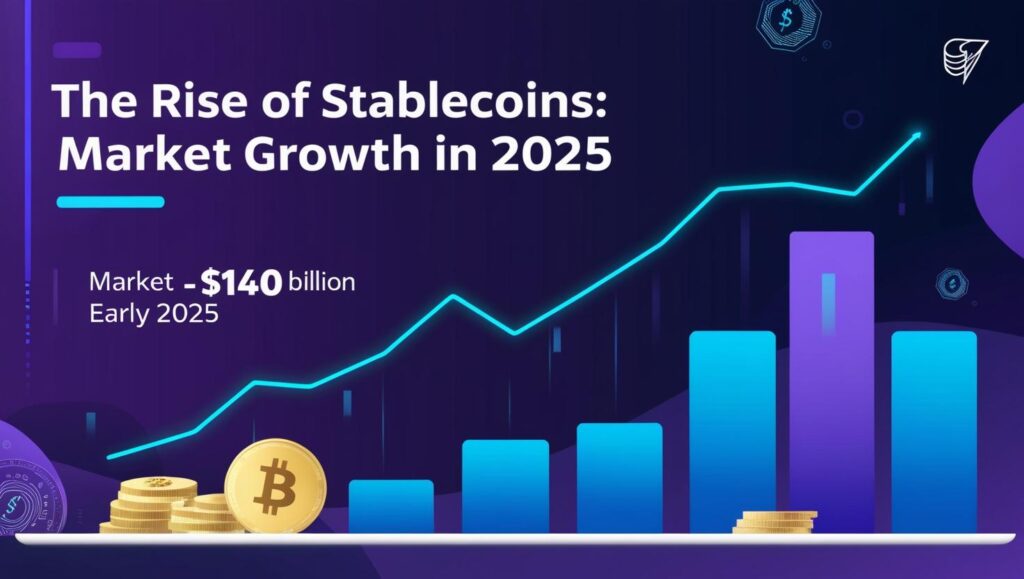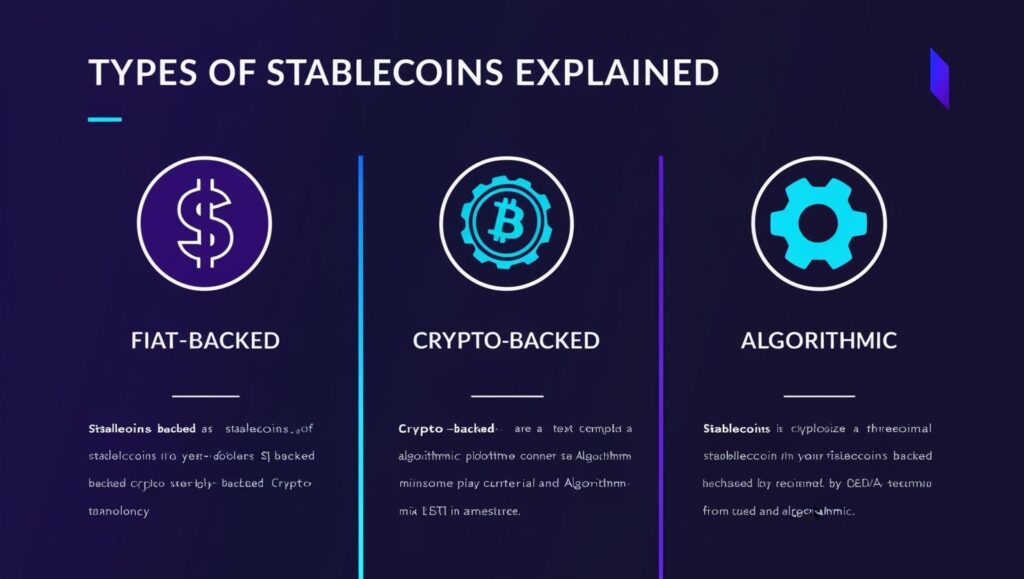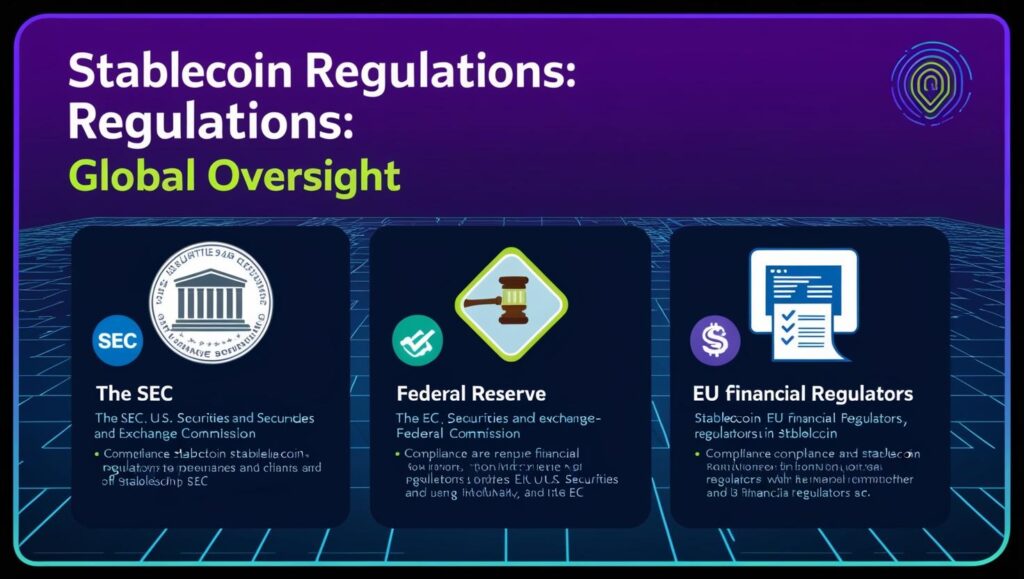Introduction
The stablecoins market is expanding quickly, with a total market valuation surpassing $140 billion beginning around early 2025. As institutional investors look for more secure ways to interact with cryptocurrencies, financial giants like Fidelity Investments are proactively entering the stablecoin market. Fidelity’s entry into this sector signals a revolutionary change, which supports the growing acceptance of digital assets in traditional finance.

The coins which are stable are transforming the cryptocurrency scene because they are known for their price stability and efficiency. New investment opportunities are being created as a result of their integration into mainstream finance which is attracting both retail and institutional investors. With the news of Fidelity stablecoin making waves, it is imperative to examine how this development will affect cryptocurrency market analysis and the larger trends in the market by 2025.
Understanding Stablecoins: What & Why?
What’s Stablecoin?
Stable coins are digital assets that are linked to a reserve asset, such as fiat currency, commodities, or other cryptocurrencies in order to keep their value constant. They offer a trustworthy substitute for the volatility of traditional cryptocurrencies like Bitcoin and Ethereum.
The three main types of stablecoins include:

Fiat-backed stablecoins (e.g., USDT, USDC): tied to currencies issued by governments like the US dollar.
Crypto-backed stablecoins (e.g., DAI): Protected by other cryptocurrencies.
Algorithmic stable coins: Algorithmic stablecoins regulate supply and demand using algorithms and smart contracts to maintain stability.
Why Do Stable coins Matter?
By bridging the gap between decentralized assets and traditional finance, stablecoins allow:
Low volatility: This makes them ideal for payments and remittances because of their low volatility.
Global transactions: Providing quick and inexpensive international payments.
Integration with DeFi: Making it possible for decentralized finance ecosystems to lend, borrow, and trade.
The increasing adoption of stablecoins is reshaping the financial sector, which is also promoting blockchain-based transactions and opening up new stablecoin investment options.
Fidelity’s Move: A Game Changer?
Leading asset management company Fidelity Investments has declared its intention to join the stablecoin market, following in the footsteps of major players like JPMorgan (JPM Coin) and PayPal (PYUSD). This action demonstrates how traditional financial institutions are becoming more confident in digital currency.
Why Is Fidelity Entering the Stablecoin Space?

Fidelity’s stablecoin program is motivated by several factors:
Institutional demand: For smooth transactions, corporations and institutional investors are looking for stable digital assets.
Tokenization of assets: Digital trade backed by assets can be made easier with Fidelity’s stablecoin.
Future of finance: The company aims to lead in blockchain investments and digital asset innovation.
By leveraging blockchain technology, Fidelity is positioned to have a significant impact on how digital finance develops in the future. The launch of a Fidelity-backed stablecoin could accelerate institutional crypto adoption, establishing stablecoins as a commonplace financial product.
Regulatory Challenges & Market Risks
The rise of stablecoins has drawn significant regulatory scrutiny worldwide. To monitor their use and reduce related risks, governments and financial regulators are creating frameworks.
Important Regulatory Challenges

SEC & Federal Reserve Oversight: US regulators are strengthening their rules and policies to prevent potential financial instability.
Global Regulations: Strict guidelines on stablecoin issuance are being implemented by countries like the EU and China.
Market Risks
Depegging Risks: As seen by past collapses, a failure in asset reserves could destabilize stablecoin value.
Government Crackdowns: Increased scrutiny may lead to restrictions or outright bans.
Security Concerns: Smart contract vulnerabilities and cyber threats continue to be major problems.
Despite these challenges, regulatory clarity could boost confidence in stablecoins, encouraging further institutional adoption and innovation.
Future of Stablecoins & Fidelity’s Role

Where Is the Stablecoin Market Headed?
Stablecoin use is expected to soar in 2025, according to crypto market trends, with a number of changes influencing the future:
Central Bank Digital Currencies (CBDCs): Governments may introduce CBDCs as regulated alternatives.
New Players & Innovations: More financial institutions may follow Fidelity’s lead in launching stablecoins.
Expansion into DeFi & Payments: Stablecoins could dominate global finance by streamlining digital transactions.
Fidelity’s entry into this space signals the mainstream acceptance of stablecoins as essential financial instruments. Their adoption could redefine financial infrastructure, promoting digital finance evolution.
Conclusion
An important turning point in the integration of blockchain-based digital assets with conventional finance is Fidelity’s stablecoin program. Stablecoins have the potential to transform international finance, investments, and transactions as they acquire popularity.
Do you think stablecoins will dominate the financial world? Share your thoughts in the comments below!
For more insights on cryptocurrency investments and blockchain trends, check out our latest articles.


The expansion of the stablecoin market is truly fascinating, especially with giants like Fidelity stepping in. It’s clear that stablecoins are becoming a bridge between traditional finance and the crypto world, offering stability in an otherwise volatile space. The idea of algorithmic stablecoins is particularly intriguing—how do they ensure long-term stability without relying on traditional reserves? I wonder if Fidelity’s entry will set a new standard for transparency and trust in this sector. Do you think this will push other financial institutions to follow suit? Also, with regulatory scrutiny increasing, how do you see the balance between innovation and compliance playing out? It’s exciting to see how this will shape the future of finance, but I’m curious—what’s your take on the potential risks of over-reliance on stablecoins?